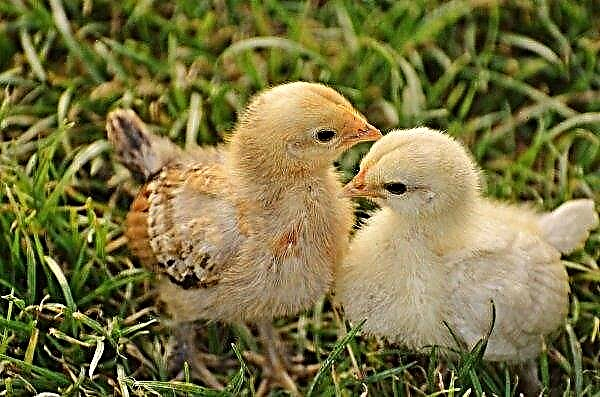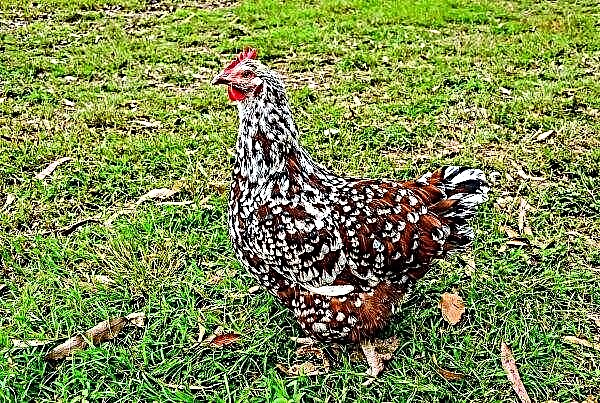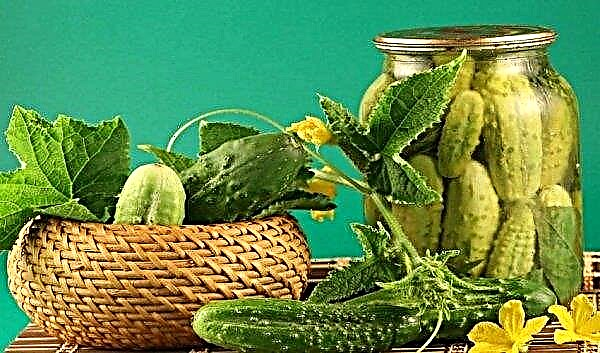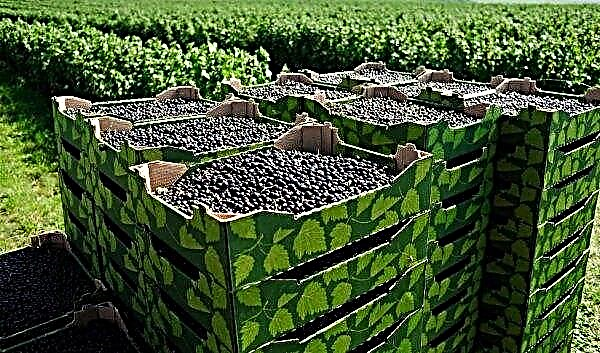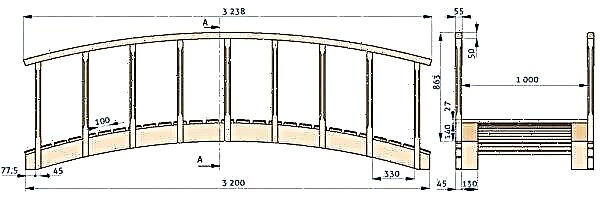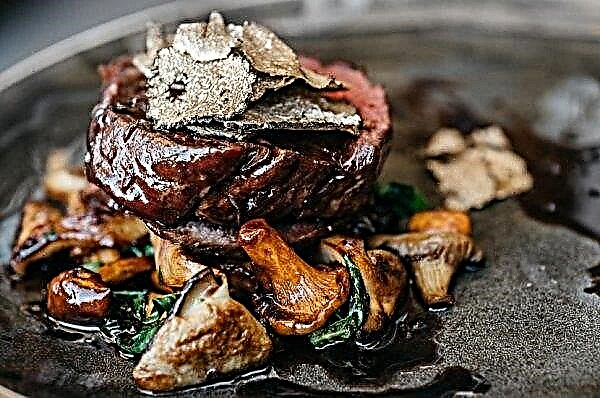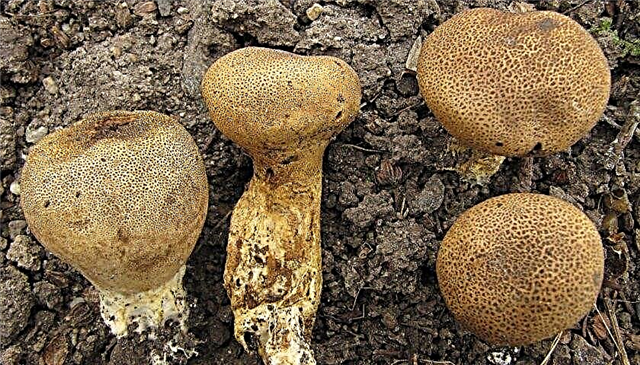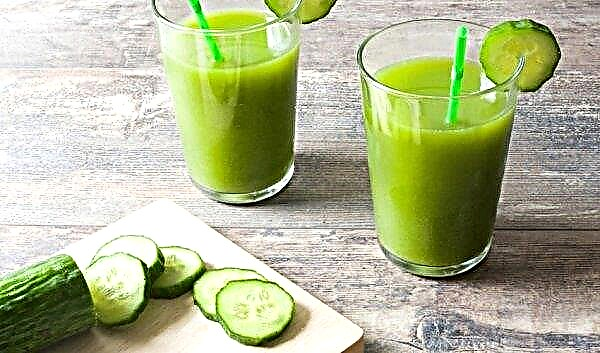Fresh vegetables all year round is no longer a fantasy, the main thing is to properly equip a greenhouse for growing them and choose a suitable variety. In this article, we will talk about cucumbers and methods for growing them in a winter greenhouse.
The best varieties
Growing vegetables in winter is notable for a small selection of vegetable varieties, since during this period there are factors such as a lack of light and heat, the absence of pollinating insects and the influx of fresh air. The following varieties are considered the best for a winter greenhouse:
The following varieties are considered the best for a winter greenhouse:
- Anyuta - the variety is resistant to powdery mildew, mosaic and olive spotting. The bush is branched, on a branch of up to six ovaries, the fruit is 9-12 cm long, tuberous, with white spikes, yield is 15-20 kg / sq. m;
- "Dynamite" - branched, with small leaves. Fruits in the form of a cylinder with tubercles and stripes, 12-14 cm long, yield up to 18 kg / sq. m;
- "Zozulya" - early ripening, up to 20 kg of crop is harvested per square meter. The fruit is cylindrical in shape up to 24 cm long, weighing 300 grams, the skin is thin, the seeds are small;
- "The calendar" - a bush of medium branching, forms more than six ovaries on a branch. Fruits up to 10 g weigh and up to 10 cm in length, resistant to mosaic and powdery mildew, productivity - up to 15 kg / sq. m;
- Liliput - the bush is medium-sized, forms about three ovaries, fruits up to 90 g in weight and up to 10 cm in length, productivity - 10 kg / sq. m, has immunity to many cucumber diseases;
- "Swallowtail" - unbranched with long lashes, the size of the fetus is 7–11 cm, weight is 110 grams. It is resistant to powdery mildew, downy mildew, olive spotting, productivity - 12-17 kg / sq. m
Important! All of the above varieties in the name have the prefix F1, which means that the variety is self-pollinated and does not require artificial pollination efforts.
Self-growing seedlings
Gardeners with experience recommend growing seedlings directly in the greenhouse, so that with subsequent transplantation, the seedlings have a high percentage of survival, while you need to take care of heating and lighting.
Soil mix
Light soil with a slightly acid reaction is suitable for cucumbers. An ideal composition of peat, humus, sand and garden soil. You can disinfect the mixture in several ways:
You can disinfect the mixture in several ways:
- treating it with a seven percent solution of copper sulfate;
- steam - hold for about two hours in a water bath;
- calcine - spread on a baking sheet with a layer of 5 cm, hold in the oven for 20-25 minutes at 100 ° C.
Did you know? The first greenhouse constructions were erected in ancient Rome during the reign of Tiberius, who loved fresh vegetables.
Capacity for growing
The best option for the capacity for cucumber seedlings will be peat cups. Since the seedlings do not tolerate transplantation, it has weak roots, it is not advisable to dive it. In the case of peat pots, seedlings can be transplanted without removing from the tank.
Seed preparation
The seed preparation process consists of the following processes:
- Sorting - Inspect the planting material and remove damaged and broken specimens. To get rid of pacifiers, the seeds are kept for some time in the water: the pacifiers will emerge, the fruiting seed will remain at the bottom.
- Disinfection. The easiest option is to hold the seeds for about twenty minutes in a solution of potassium permanganate, then rinse with clean water.
- Hardening - it is necessary in order to increase seed germination and give them resistance to temperature extremes. To do this, the prepared planting material is placed in wet gauze and sent to the refrigerator (on a shelf for vegetables and fruits) for a week. Gauze is periodically wetted.
- Stimulation - for better growth, the seeds are processed in a special preparation "Epin", acting according to the instructions attached to it.

Sowing seeds
Sowing dates depend on when you want to harvest. For example, if sowing was carried out in early September, then in January you can harvest. If you want fresh vegetables all year round, you need to sow every two weeks.
Peat cups must be washed with a solution of manganese. Then fill them with the prepared substrate, pour it. When planting, deepen the seed by 1.5–2 cm. After sowing, cover the container with a film to avoid dry soil.
Seedling Care
Seedlings germinate in a dark, warm place at a temperature of at least 25 ° C. As soon as the shoots appear, they need to provide lighting up to 20 hours a day (the first three days), and lower the temperature to 15 ° C. After three days, the lighting can be reduced to fourteen hours a day.
Crops need two waterings per week, while using warm, settled water. After the appearance of the third leaflet, organic dressing (mullein solution) is carried out.
Transplanting seedlings into the greenhouse
25-30 days after sowing, stronger seedlings are transplanted into the greenhouse. The soil mixture on the beds is the same as when sowing seeds. A layer of manure is put under a layer of soil, spilled with hot water, and then covered with a layer of earth 20-30 cm. Thus, the made bed will always be warm. The holes are made at a distance of 20-30 cm, the distance between the rows is up to 90 cm. The seedlings are carefully removed from the cups, being careful not to damage the roots, without shaking the lump of earth, and placed in the hole. Trying not to touch the stem, sprinkle the earth, tamping slightly.
The holes are made at a distance of 20-30 cm, the distance between the rows is up to 90 cm. The seedlings are carefully removed from the cups, being careful not to damage the roots, without shaking the lump of earth, and placed in the hole. Trying not to touch the stem, sprinkle the earth, tamping slightly.
Too deep to plant is not worth it: you need to leave 2-3 cm of the stem above the surface.
Cucumber Growing Technology
The best winter greenhouse will be a polycarbonate structure. To protect plants from drafts, a small vestibule is made at the entrance. Necessarily provide lighting, in open areas establish protective barriers from drafts around the greenhouse structure.
The necessary conditions
The desired temperature is maintained by the heating system. To maintain humidity in the room, establish containers filled with water; heating pipes are also regularly watered. It is important to ensure the proper level of lighting, for this they install lamps under the ceiling, preferably movable, so that their height can be adjusted.
Microclimate for culture:
- temperature during the day - 23–25 ° С, at night - 17–19 ° С;
- humidity - 80–85%;
- Lighting - 12 hours a day.
Transplant Care
Care of the crop consists of watering, cultivating the soil, and feeding. It is also necessary to adjust the height of the lamps so that, as the plants grow, its leaves are not burned.
Watering
The soil must be kept moist, and you can use two methods of watering: drip and root. In both cases, watered with warm, previously settled water.
Important! If you can’t devote time to regular watering, mulching with peat or straw comes to the rescue.
Top dressing
Both organic and mineral mixtures are suitable as fertilizers. Mineral complexes can be purchased at the store, from organics it is better to use a solution of chicken droppings or mullein.
The plant receives the first fertilizer in the seedling phase, the second time during the formation of the ovaries, the third during the flowering period. When the fruits appear, it is better to use organics for feeding, fertilizing the culture up to four times.
Shaping and tying a bush
Branching bushes form two to three stems. Since the branches curl in the manner of creepers, they require garters to support. It is preferable to use the vertical method:
It is preferable to use the vertical method:
- Take two wooden or metal planks. One is attached to the ceiling, the second - near the ground.
- Between them vertically stretch pieces of thin twine or string.
- Growing branches stretch along a rope.
Did you know? Emperor Napoleon, who loved cucumbers, promised a big cash reward to someone who came up with a way to preserve the vegetable for long trips.
Soil care
The root system of cucumbers for normal growth and fruiting requires constant access of oxygen. To do this, carry out regular loosening of the soil, simultaneously cleaning it from weed grass. So that the bare stalks do not freeze, they also regularly spud.
With proper care and the creation of the necessary conditions, a crop of cucumbers can be obtained all year round. Fresh vegetables on the table in winter will delight the whole family with a vitamin charge and present spring mood.

